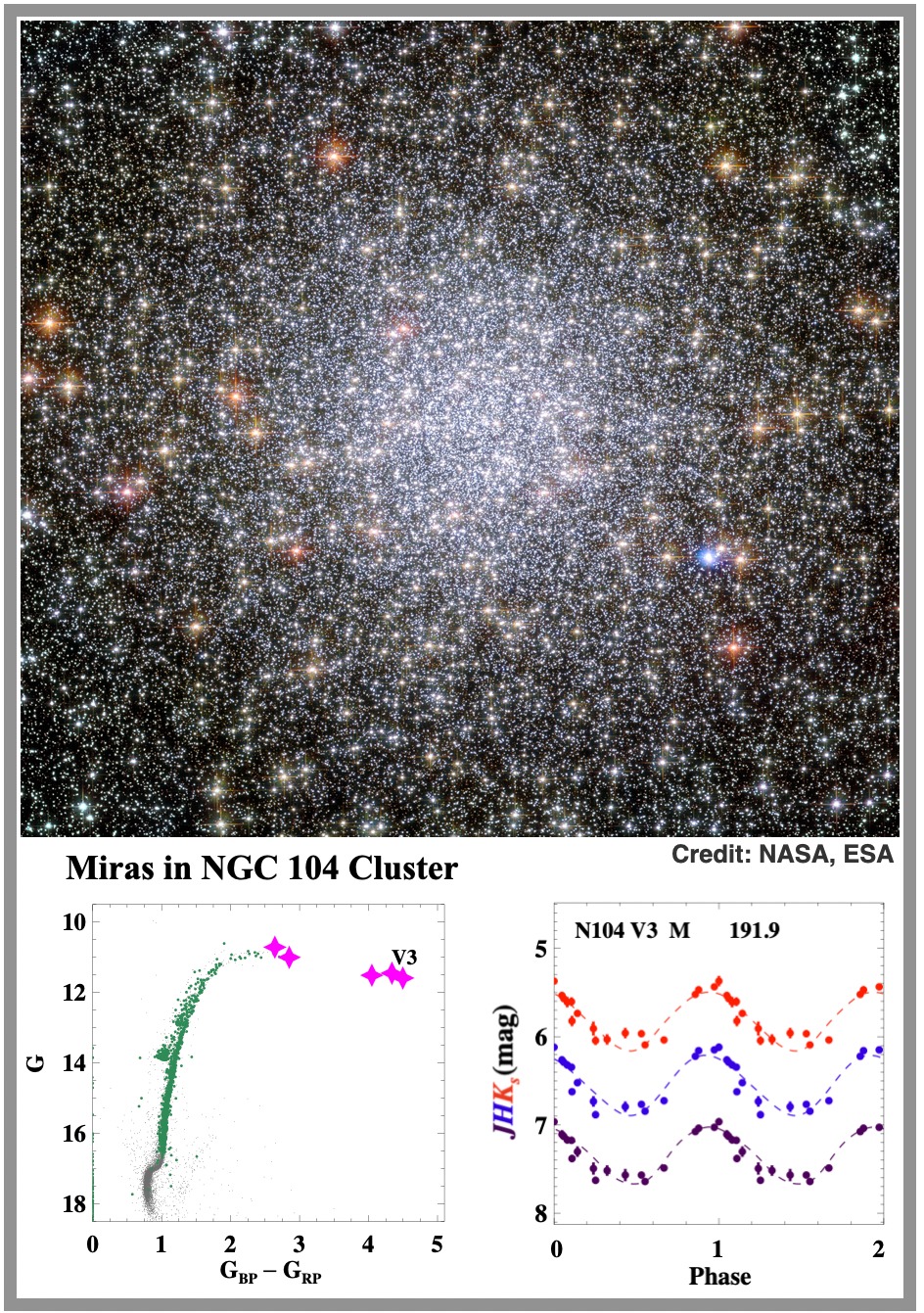Mira Variable Stars

- 06 Sep 2025
In News:
A landmark study by the Inter-University Centre for Astronomy and Astrophysics (IUCAA), Pune, in collaboration with international scientists, has provided the most precise measurement yet of the Hubble constant, the rate of expansion of the universe. The work, co-authored by Nobel laureate Adam Riess, introduces oxygen-rich Mira variable stars as a new and reliable anchor in the cosmic distance ladder.
What are Mira Variables?
- Mira (Omicron Ceti), discovered in the 17th century, was the first known variable star, named “Mira” meaning ‘the wonderful’ in Latin.
- Mira variables are cool, giant stars (surface temperature ~3,000 K) in their late life stages.
- They exhibit regular cycles of expansion and contraction, leading to predictable brightness variations over 100–1,000 days.
- Crucially, their luminosity is strongly related to pulsation periods, making them excellent “standard candles”—objects of known brightness used to measure cosmic distances.
The IUCAA Study
- Led by Prof. Anupam Bhardwaj, the team studied 40 oxygen-rich Mira stars across 18 stellar clusters in our galaxy.
- Using precise distance data from the European Space Agency’s Gaia mission, they calibrated the absolute luminosities of these stars with unprecedented accuracy.
- This enabled an independent period–luminosity relationship, bypassing traditional reliance on Cepheid variables.
- The study achieved a 3.7% precision in measuring the Hubble constant—the most accurate determination using Miras to date.
Significance for Cosmology
- Mira-based calibration provides an independent check on Cepheid-based measurements, reducing metallicity-related uncertainties (Miras are 3 times less sensitive to metal abundance than Cepheids).
- Current results show consistency between Mira-anchored and Cepheid-anchored Hubble constant values, suggesting that the long-standing “Hubble tension”—the mismatch between early-universe (CMB-based) and late-universe (stellar-based) expansion rates—is not due to measurement errors.
- This points toward possible new physics beyond the Standard Cosmological Model.
Limitations and Future Prospects
- Presently, only two supernova-host galaxies contain known Mira stars, limiting large-scale calibration.
- Upcoming surveys with the Rubin Observatory are expected to discover numerous Miras in distant galaxies, significantly improving cosmic distance measurements.
- The study thus opens pathways to a more accurate determination of the universe’s age and size.
